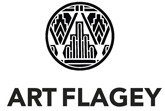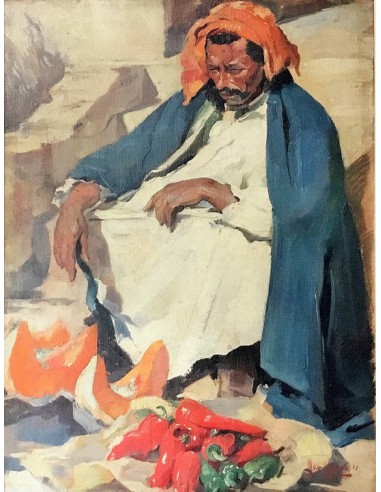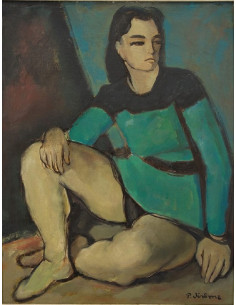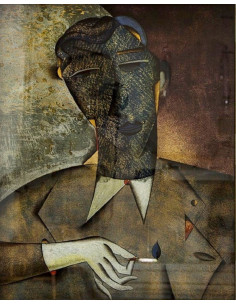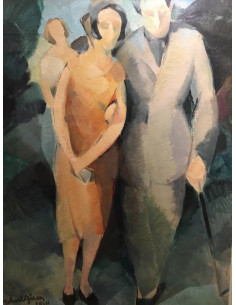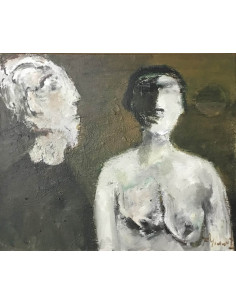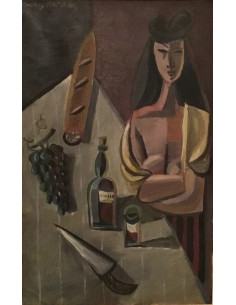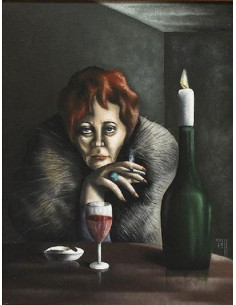Orientalist painting from 1929 by the famous Belgian artist Max Moreau.
The painting, which was probably created during one of his trips to the Maghreb, depicts a tranquil scene from everyday North African life. In the center, an elderly man in traditional clothing sits on a low step or threshold of pale stone. He wears a long, white robe (djellaba), over which hangs a wide, blue cloak that falls loosely over his shoulders. His head is covered by an orange scarf wrapped like a turban and hanging loosely over his ear.
The man's posture appears calm and thoughtful. His arms rest on his knees, his hands hang relaxed, his gaze lowered – almost as if he were lost in thought or resting. His eyes are half-closed, and his face displays a slightly tired but dignified expression. The depiction avoids any folkloristic exaggeration and instead conveys a quiet presence and dignity.
At his feet are various vegetables draped: bright orange, quartered pumpkins, next to them a pile of red and green peppers. The fruit and vegetables are realistically depicted, yet with a loose brushwork—the bold colors form a brilliant contrast to the sandy surroundings and the calm palette of the clothing.
The background is pared down and dominated by a hint of sunlit architecture made of natural stone—possibly a house wall or a market building. Light and shadow sculpt the scene in warm ochre tones, creating a deep, shimmering atmosphere typical of North African markets.
The painting style is influenced by impressionism, with broad, fluid brushstrokes, a visible brushwork, and an emphasis on natural light. The composition is balanced, calm, and focused on the essentials: people, light, color, and the moment.
About the artist:
Max Moreau (2.9.1902 Soignies – 2.9.1992 Granada)
The Belgian painter Max Moreau is known for his Orientalist paintings. Between 1929 and 1938, he traveled several times to Tunisia and other North African countries in the Maghreb, whose culture would have a lasting influence on his paintings. The light of the Maghreb particularly captivated him and found expression in his works. In 1947, he and his wife moved to Marrakech.
In the 1950s, he became a sought-after portraitist in New York and Palm Beach. Moreau became known, among other things, for his numerous portraits of artists from theater, film, and opera.
His last exhibition took place in 1981, after Parkinson's disease forced him to give up his artistic practice.
In his will, Moreau left his inheritance to the city of Granada, where he had lived since 1966. His residence is now a museum, his studio has been completely preserved, and much of his work is accessible to the public free of charge.
